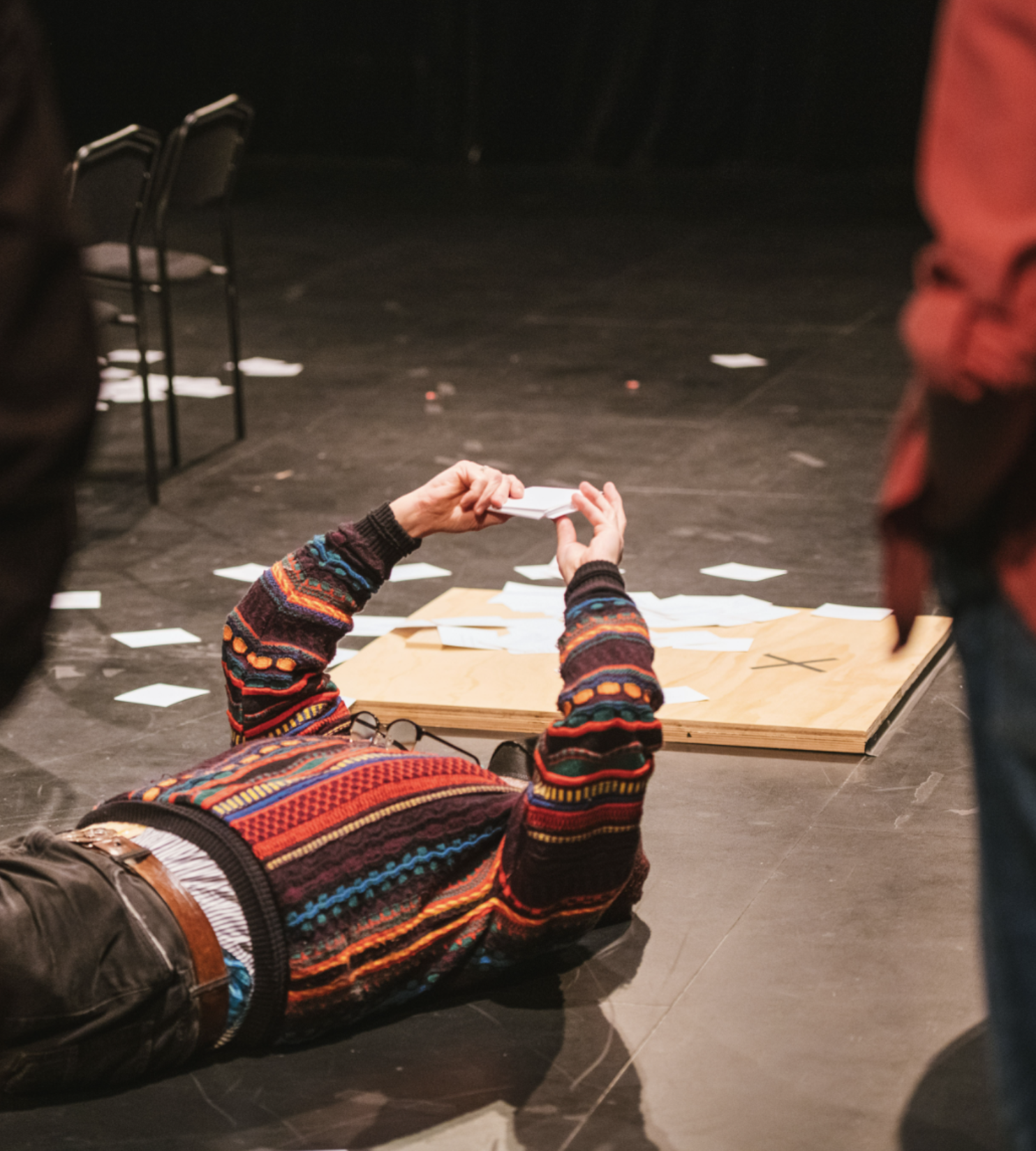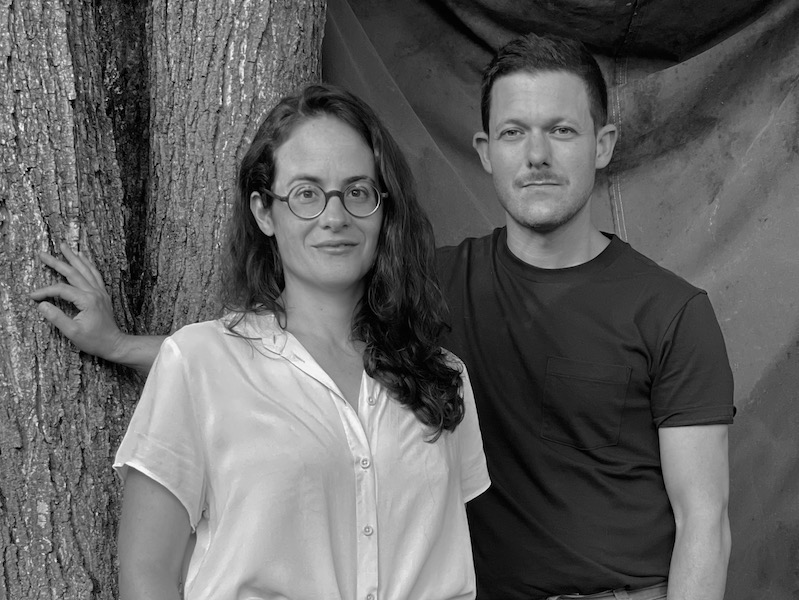 citizens
citizens
An Assembly: in conversation with 600 HIGHWAYMEN
Marc el Samrani interviews Michael Silverstone and Abigail Browde on their iconic project
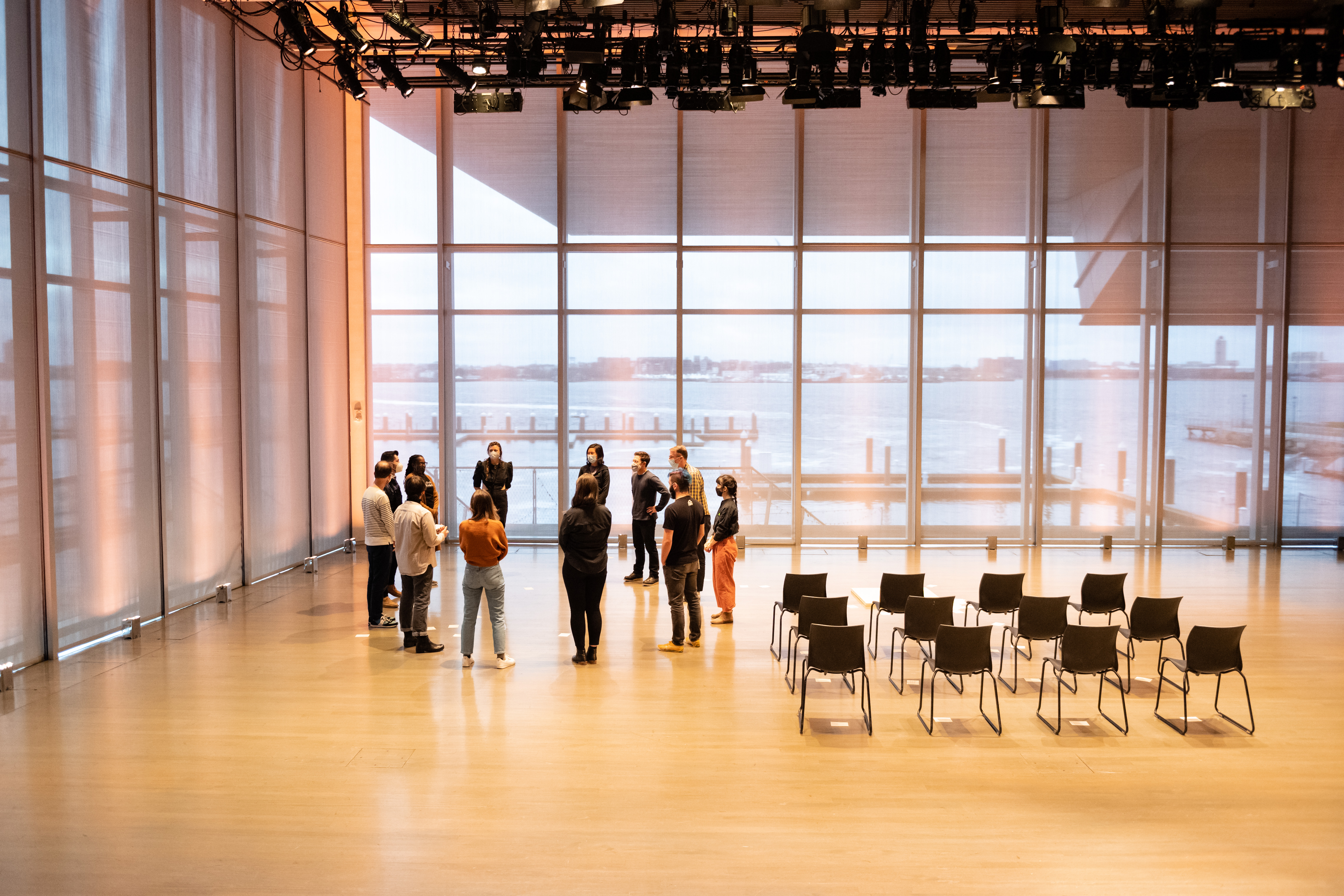
Listen to the conversation on the IN SITU Podcast
and/or read below:
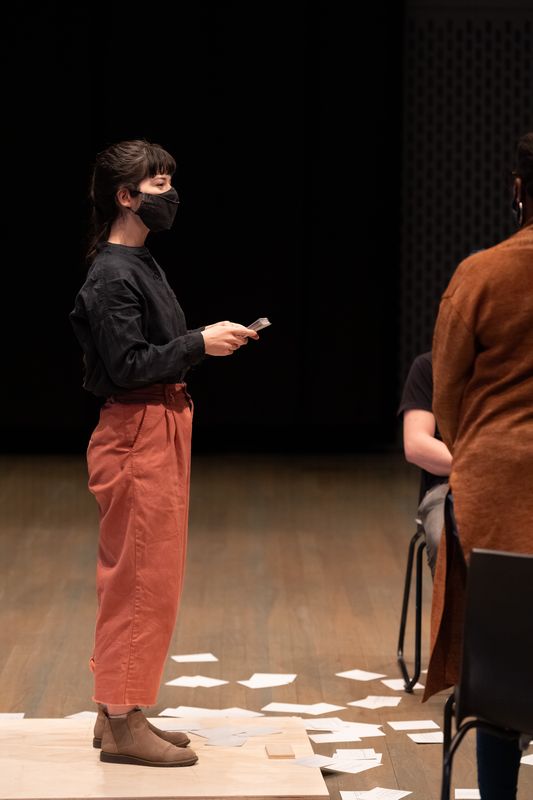 | Marc El Samrani It's been a few days that we're in Sotteville-lès-Rouen, at Atelier 231, for you to work on the French adaptation of your project, “A Thousand Ways”, which is the third part of a bigger project called AN ASSEMBLY. So we've seen a couple of groups going into that room, participating in the project and going out in very different ways. We're going to talk about this a bit later. But I'd love to know, first of all, why the name, why the title of this project? What is “A Thousand Ways”? A thousand ways of what? Michael SilverstoneWell, let's see, there's a couple of ways to answer this. When the project originally started, the title was called “A Thousand Ways to Listen”, and it had, sort of, a much more prescriptive quality to it. First of all, it makes it seem as if listening is the imperative. And second of all, it conveys too much of an intention and too much of a theme. And so, we basically decided to cut the title and to just stick with something that was more evocative, “A Thousand Ways”, that feels sort of like half of an idea. So it's a little suggestive of so many other things. And so I think that's why we chose it. |
Abigail Browde I mean, it was also in the early conceit of the project. We originally designed the project to happen for a thousand people simultaneously. I only remember this as you were talking. And so it was this idea that something there would be a set of instructions from us, that the piece would exist as a set of instructions or a kind of script or a set of directives, but that every person doing it was going to do it slightly differently than the other people in the room. And so the idea of "A Thousand Ways" of doing something represented all the people who would be doing, activating, making the project. Michael Silverstone I think that's what I like about the title is that, first of all, there's something really large about it. So I feel like it captures the mythic, sort of epic qualities of the simplicity of a small assembly of people. So I think there's a really interesting contradiction that you buy a ticket for this thing called “A Thousand Ways”. It has this sort of large, ephemeral, and mysterious quality to it, and yet you're just 16 people in the room. And I think there's a tension in that. It's really simple. There's a room full of people and a deck of cards, and yet it seems like this could go thousands of ways. And yeah, it suggests, as you know, as we know, no performance is like any other. So even though the script stays the same, and everything stays the same, people are different and the interpretation is different. The tone is different. So, yeah, I feel like “A Thousand Ways” captures the sort of infinite possibilities of how this could go. | |
| Marc El Samrani Well, I personally understood it in a different way. I thought you were going for "thousands of ways to communicate". Through this project you propose three ways in three different parts of the project to initiate a group communication, to initiate, like a public space. But it's like I agreed, it can be understood in so many different ways. But actually, this takes me to my next big question topic. So, one of the main subjects of IN SITU is to kind of see how we can create in public space or in non-dedicated spaces. So I want to know, how would you define public space as a whole? It's a very wide question, but what interests me as well is that there are two partners: the public and the space. So how do you define public, how do you define space and how do in public spaces a new concept. Because the question of the public is very present in your show. | 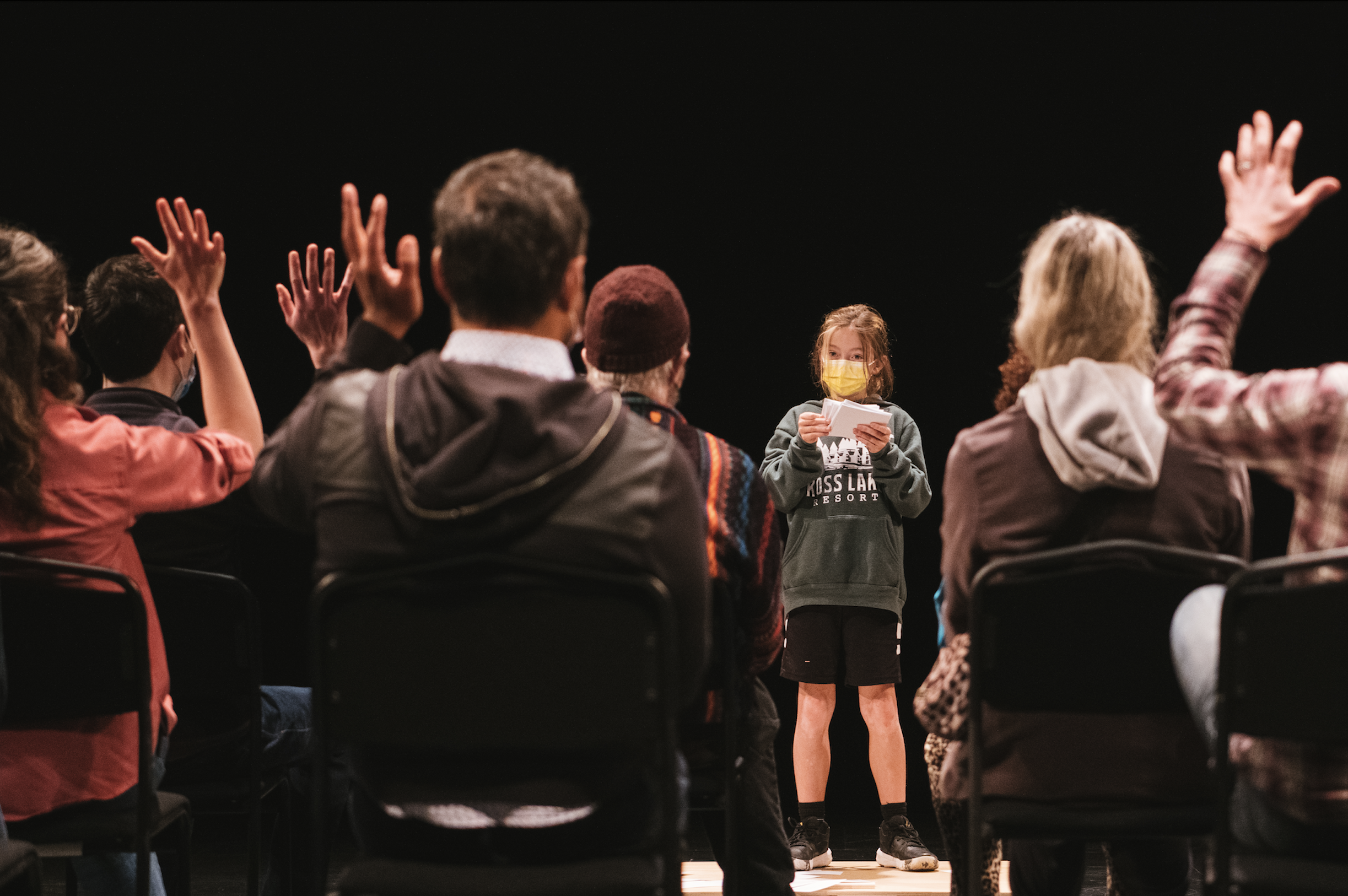 | |
Michael Silverstone Do you think so? Marc El Samrani Well I have some questions about it, but the difference between public and a group, like the shift that happens during the show, the public becomes a group. I personally believe that any kind of performance involves participation by the public, even though they're just watching a show, they are participating in some way in creating that world that the show can initiate. But in your performance it's very active participation, to create that virtual space between people. So how would you define the public, or how would you define public space? Because I think what emerges from this performance is kind of an atypical public space. Abigail Browde I mean, one thing I notice from an English-speaking perspective is I think of the word "public" as an adjective. I don't think of it as a noun. And I find that when we travel, especially in European countries, that the word "public" is often used as a noun to define a group of people as an audience or a group, sort of a gathering of humans or spectators. So, often my English-speaking brain thinks of it as a descriptor. And to me, something that's public is something that's accessible. Something that's available for people to enter or access. And so public space to me is that. It's like the porous spaces, places that people can come into, penetrate, enter or access. And I also think of our work as theater. And so we often think of the theaters that we work in because we do often work in sort of conventional theater rooms. But I think we often try to approach them as if they are civic or public spaces, even though they might not technically be. You do sometimes have to buy a ticket, they might not necessarily be sort of culturally accessible to everybody, but how can we sort of reclaim theaters as places of civic happening? I don't think that's like a seed, like a starting seed for our work. But I do think it's something that's like as a result of our work. It's a question that we ask. I don't think it's like a mission for us, but it's something that comes about as a product of the work that we do. Yeah, I mean, I think that people enter into the beginning of this performance (...) and they're entering into a space that they aren't in control of or that they are subservient to. And by the end, I think there's a feeling of ownership of the experience, of the group, of the room that belongs to that. | ||
 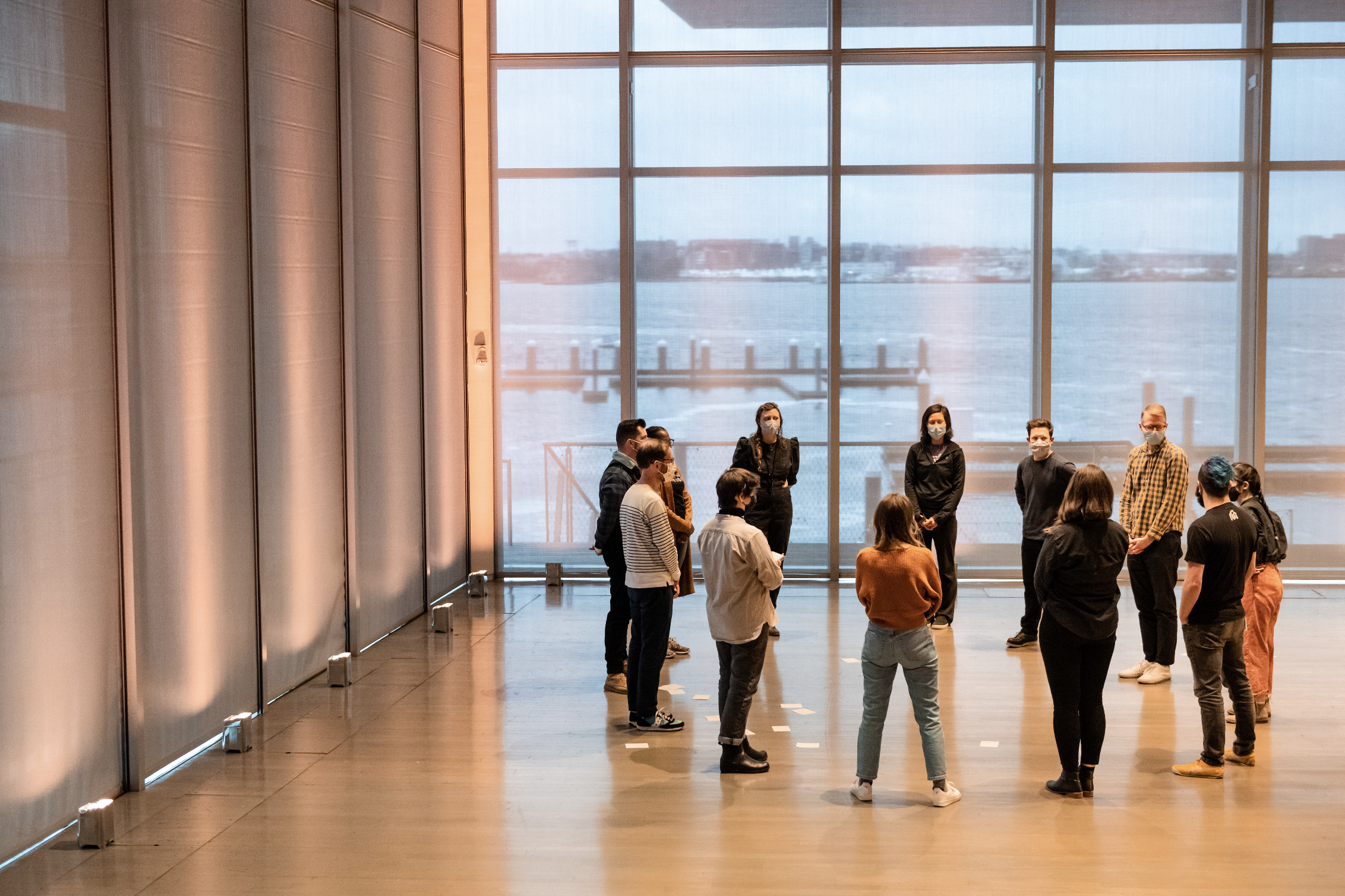 | Michael Silverstone I think the most common ark we notice, although again, it's always a little different, is that we go from sort of awkwardness, discomfort in being together, that feeling when we're in a roomful of strangers. So, people are aware of the odd setup that this is. And then at the end of the show, people feel very connected. They are ready to talk on their own. They're ready to get to know each other. They feel as if they've gone through something together that was really challenging, that they weren't sure how it was going to go. And then so by the end, it almost feels like the show is a kind of preparation for the thing that they do on their own in the ten minutes after the show, which most of the time they stand around and they talk, they get to know one another, they share their feelings on the show. But there's a kind of deep connection because they have a shared history together. They've only been together for an hour, but suddenly they feel like a community. And there's somebody who, you know, feels like the leader and somebody who's the follower and somebody who's the shy one and somebody who's the funny one (...). And so there's a kind of group identity, and then there's individual characters within this community. And so, I think that the basic arc that we see is one of like strange discomfort but curiosity to a sense of community and like, how can I explain to somebody else the thing that we just did? And of course, there are sometimes people who don't feel that at all. Well, I don't know what they feel. They feel something else. They feel many other things, I guess. | |
Marc El Samrani So if you've experienced the show many times, what kind of impressions are left on you, not as the creator of the show, but as participants of the show? Abigail Browde Actually for me, I think it's hard to peel those two things apart because whenever I am attending it, I'm often thinking of it from a writing or creative perspective and not 100% just existing within that. I'm sort of listening and thinking, should that be a little different? Or is that what we did? Also, there's our writing and there's our sort of directing of the show, like giving the set of instructions within there, seeing how people do it. It's hard to quiet that side of my brain when I'm in it. But if I could, I guess the thing that I take away from it, or like the experience that I like the most is, is when things actually do not go according to plan, because I'm like, oh no, we have to fix it so it doesn't go off the rails. And usually within a couple minutes I realize, this is actually pretty beautiful, this way of getting off the rails. And the group will find a way through it and that sort of sufficiency or that group dynamic of almost survival is actually usually ten times more interesting than what we had planned. | 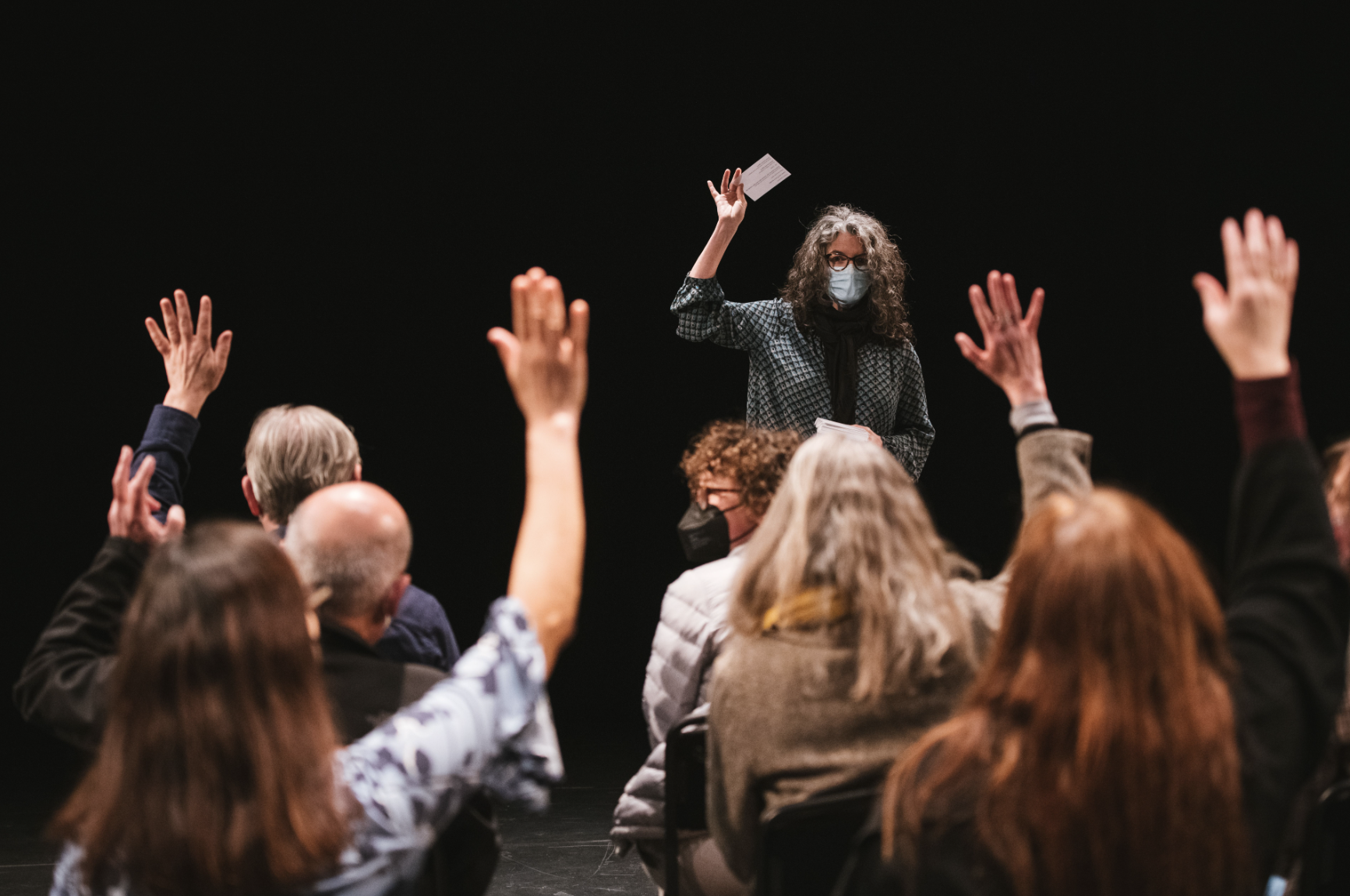 |
Abigail Browde You have to dance with two sides of your brain at the same time. One is just purely mechanics. It's like, okay how are we going to get these people to do that? At the same time, you can't focus purely on mechanics, then it's a very cold experience. And so, at least for me, it's very easy to get lost in the puppeteering of people, for lack of a better term. And then you're not actually engaging with the audience and the experience? What's at the heart of this experience? | Michael Silverstone My main feeling is that I'm always surprised. I'm always surprised by how it goes, you know. Actually most specifically when I happen to know the people in the room, I am always surprised. In terms of wow, I didn't know it was going to go that way, or I didn't know they were going to do it like that. And then there's the other experience with people that I don't know, and I'm just there as a stranger and everybody is a stranger to me. I notice that I tend to have an idea of how somebody is going to be, you know. I've observed them in the pre-show. I've watched them come into the room, I've watched them fumble with their backpack, and I have the sense of them. And then the cards go to them and suddenly this whole other figure comes out and I feel humbled by that because it means that the thing that I thought would be fact is actually not factual at all. Or there's just a kind of like, wow, we will continually surprise each other, or we make assumptions about people all the time. And even though I'm not really getting to know somebody by hearing how they read their cards, I am seeing how their eyes move and seeing how their voice works, and seeing how they make eye contact, see how they move their body and move the cards, and how they adjust their hair or whatever. And I'm almost always surprised because the way that I've characterized somebody in my mind is almost always, never what actually happens in that room. And we've learned that sort of the hard way because sometimes we've said, "oh, you know, we should invite this person to the show. She'll be great!". And then suddenly a different person comes out. Although that's really different from what I'm talking about. But I just am almost always surprised. These projects were really hard to figure out, and I think we thought they would be easier because there's no actors. It's just people and cards. But I think the project stayed, in our minds, mediocre for a very long time as we were testing it. It was not really working. And so it was really challenging to figure out how to use the elements, use the very limited tools that we have. We can't really control the actions of the 16 people through the note cards in that space, so how can we do something that feels very unique and authentic in the process. We had a lot of ideas that felt like “ I've seen this before”. But I want to believe that we landed on something interesting. And it was really challenging to figure out how to do that. |
Marc El Samrani Have you had any feedback from people that went into the show? Abigail Browde I think it's a hard show to talk about. And sometimes I think I get a little self-conscious. I'm like, oh, it's because no one liked it. But I actually think that it might be hard to talk about, especially because, and I just realized this actually last night during a conversation with someone who did it here, (...) you don't know what's on the other people's cards. Sometimes you can have a sense of what they're saying, that it's what's being given to them. And sometimes I think there's a question of are they doing what's been told? Sometimes people are unsure of how to talk about their experience because you're kind of evaluating how you and your cohort did, and it's hard to evaluate it in that way. I think people will say very general things like "It was moving" or "we had a really nice time". But I think it's a hard show to get specific about, for people to observe and relay that experience, unless it’s with other members of the performance. Because I actually notice after the show, people tend to stay and talk to one another. And I think most people are comfortable talking with the people they've been through the experience with rather than other people. | 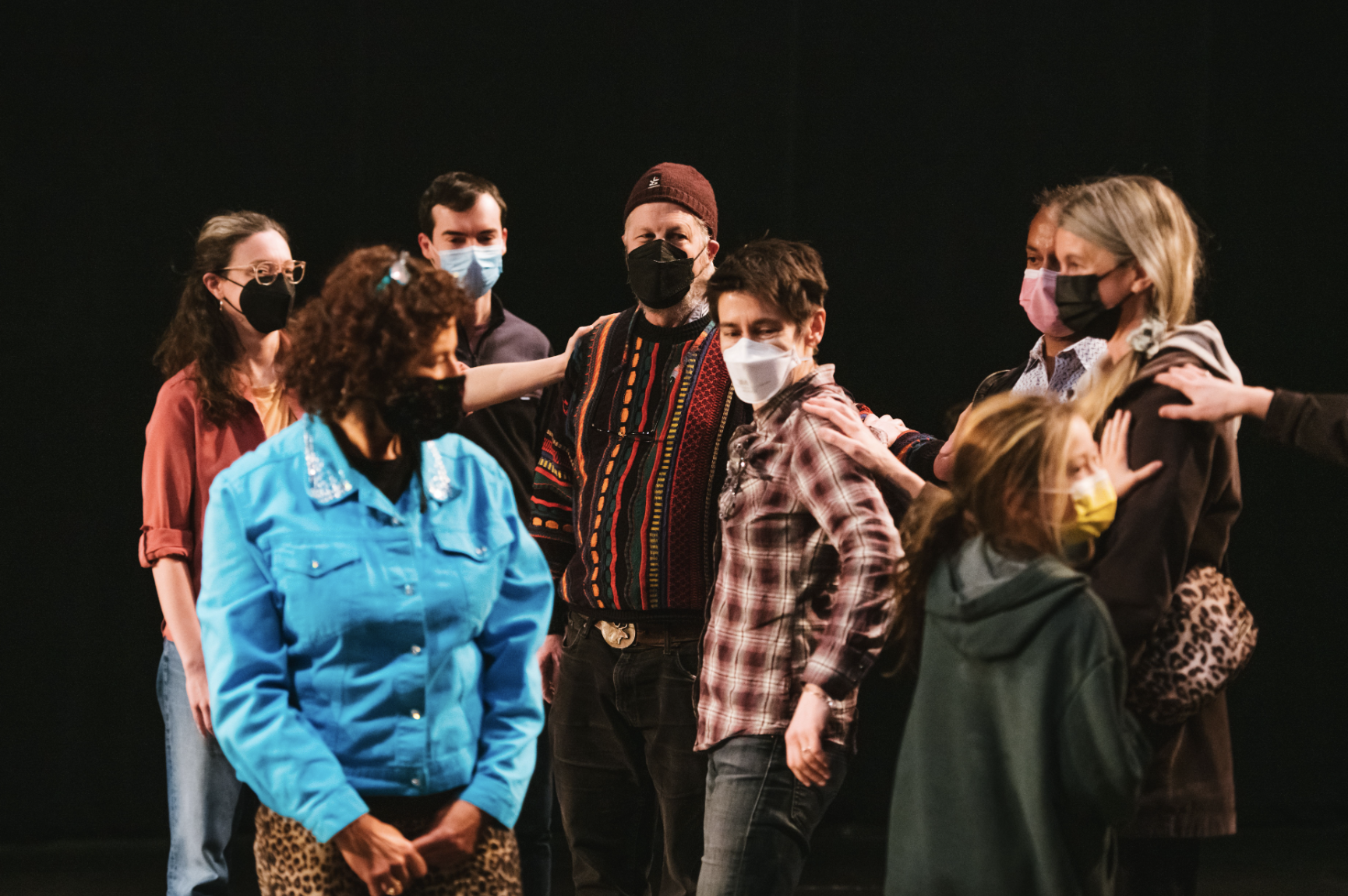 |
 | Michael Silverstone I want to believe that we all hold this desire to feel connected to a real crew of people. I think there's something exciting about having a bonding experience with a group of strangers, like it's just 16 people who bought tickets. And so it's a really random group. I can only speak for myself, but I love the idea that I'm in there with 16 totally random people, and, you know, we somehow make this thing together and then we come out on the other side and I feel instantly connected to them (...). And I think that it's very rare to have that bond. |
Abigail Browde (...) And I like the idea that the uncommon space created has nothing to do with architecture or the room, but is actually the distance between the people and that the shape of it changes over the course of the show. And so that, you know, by beginning they're standing far apart from one another in the courtyard before it's time to go in. And by the end, they're like standing in a cute little huddle and they hug. So there's actually been a total collapse of that space between people. And that's the uncommon space. And this idea that it is mutable and changes over a period of, you know, 60, 70 minutes is really neat. | |
| Marc El Samrani Have you noticed the difference between the shows in different countries and different cultures? Because there are different kinds of social distances that we adopt in different countries? Michael Silverstone None that we can see. I mean, I think the show is kind of like a sponge in the sense that it absorbs the people who are in it. And it changes in subtle ways based on the people who are there, but we can't really see any (big changes). I mean, I can't at least. Abigail Browde I don't know if it's cultural, but like when we were doing the shows in Massachusetts, we’re in a very small New England town in the United States, and the performances were slightly different from the ones we did in New York City. | 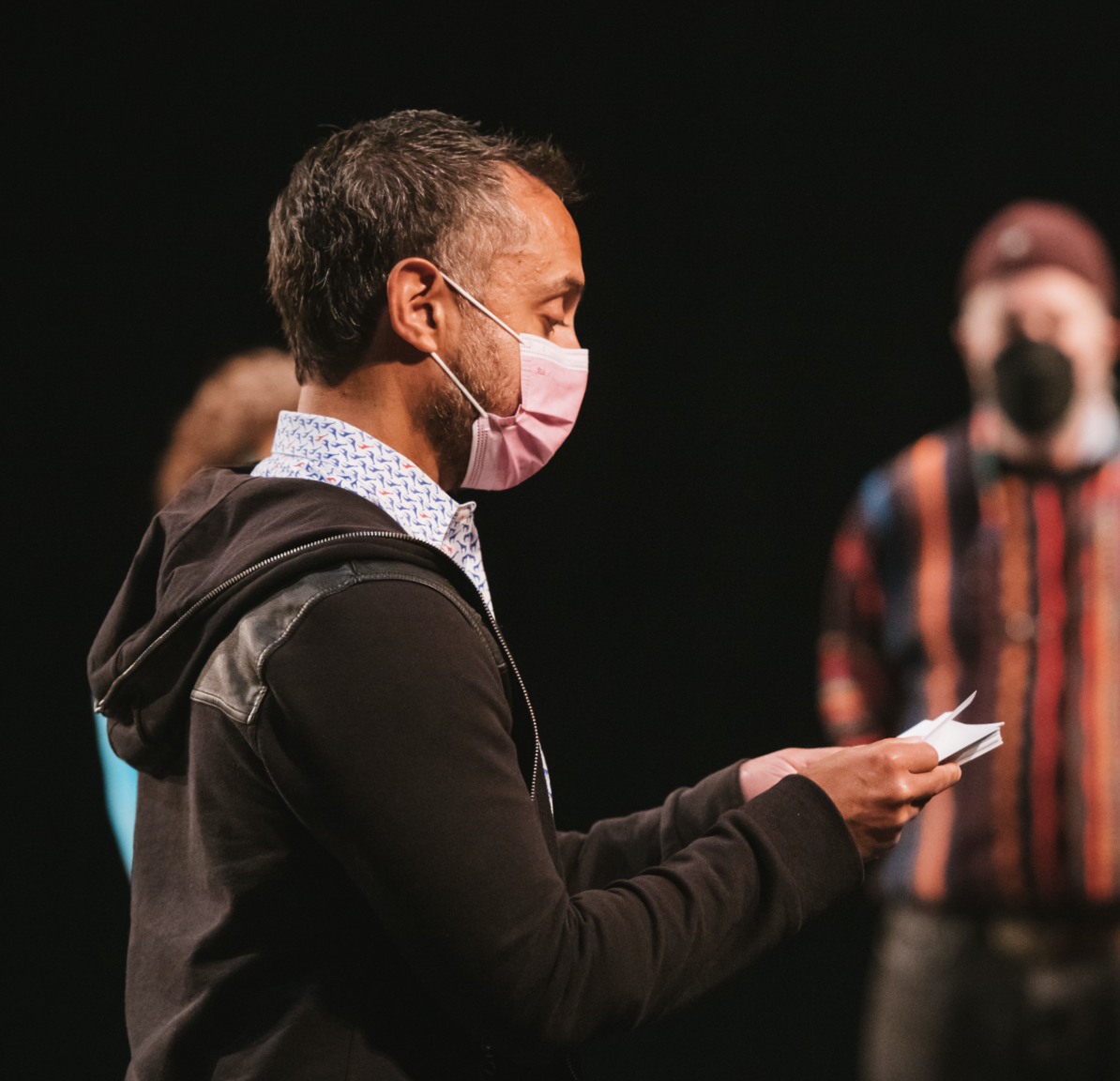 |
Marc El Samrani And, one last question, you told me that the project evolved a lot, how did it evolve? What made it evolve for you?
Abigail Browde It's a part of a triptych of pieces that we were creating over the pandemic, and we imagined that part three would be about the moment when we were able to come back together, and when we would be able to gather as groups again and in like, you know, May of 2020, that fictitious future we thought would be purely celebratory. And so our original ideas about the piece were that part three was going to feel like a party, and we were working on that version. And actually, by the time we got to the moment, when we were about to be able to do it, the world didn't really feel salvatory. It felt like there was a lot of grieving, and it felt like there was a lot of loss and a lot of reconciliation to be done. So that was one thing that changed. And then there were some practical things like our original drafts of part three were for larger groups of people. I think a group of 30 was what we were originally thinking, and we actually felt like it was not intimate enough. We tried versions of it that were done outside. This was sort of slightly logistical, because at that point we thought it was just inevitable that we were always going to have to wear masks if we were inside, and it's really a challenge to do it with masks since you can't see people's faces. And of course, all of these parameters continually changed as we were making the piece. I think we learned that doing it indoors was really most exciting to us. But that's sort of why at the end we want people to go out into the world.
Michael Silverstone I mean, we've kind of finally figured out what we were saying and it took us a long time because I think, in the beginning it was a little general and we were developing a show. It was just not not that specific. And we clarified the role of fiction in the show. The story that we are sort of telling, and in the beginning, that was a very murky story. But then we figured out that actually it needed to be crystal clear, you know, it had to, like, trick you, (...). You had to really feel the narrative, and what is the narrative? It's a town, a group of people that are experiencing nature. And we just needed to get clear with that.
 | Marc El Samrani Well, actually, when you were working outside, have you ever experienced having a public watching the group perform... Abigail Browde Creating a secondary audience? Michael Silverstone Like, you come out and suddenly there's all these people around and you're sort of showing the thing that you're doing, and there's a strangely performative aspect to it. Suddenly you're a group of people who know a way of being together, and you're doing this very private, very intimate, shared thing. And I guess that could be really cool… Abigail Browde And I think it also puts the relationship you have with these other people in relief. It's like you were once out here as a stranger, sort of like floating in islands. And you went into the room, you had this experience, and now you've come out and you've emerged a collective, and actually everyone else is the stranger now, and you are a universe. And I think that's always pretty remarkable to me how little it takes, actually, for that to happen. Like, there's something about humans. It's like we're really pre-programed for that proximity, I think. But. We just need containers to make it happen somehow. |
